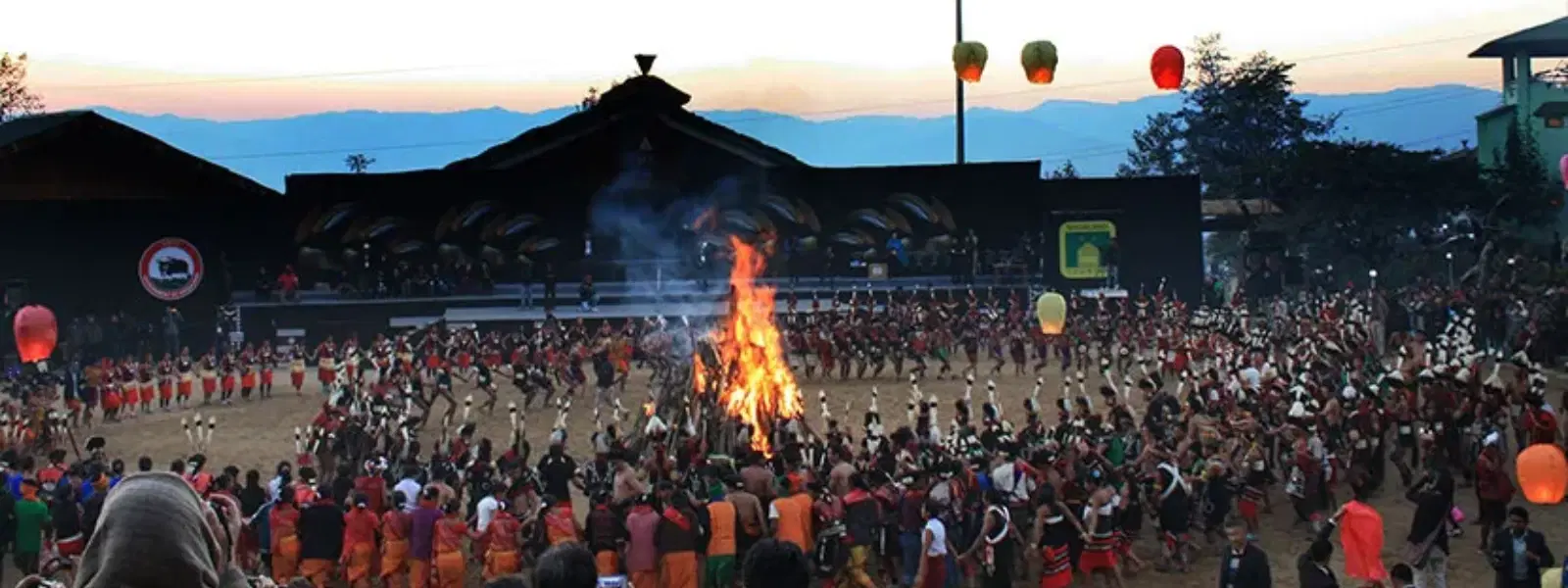
Hotels
•04 min read

The Moatsu Mong Festival is a vibrant celebration that encapsulates the essence of Ao Nagaland traditions. This festival marks the end of the sowing season with grand displays of unity, gratitude, and age-old rituals. As you read through, you'll uncover the origins, practices, and cultural significance behind this treasured festival, gaining a deeper understanding of the Ao tribe’s heritage and the unique customs that keep their history alive.
The Moatsu Mong Festival has its roots deeply embedded in history. It originated as a celebration to mark the end of the sowing season, creating a space for the community to come together after months of hard work. This festival not only celebrates the bountiful yield and the successful completion of agricultural tasks but also acts as a marker of seasonal change. Over time, it has evolved into a blend of rituals, dances, and community bonding activities that nurture the spirit of togetherness.
The festival plays a pivotal role in the lives of the Ao tribe. Rooted in an agrarian lifestyle, it symbolizes more than just a seasonal change; it represents renewal, gratitude, and unity. The deep connection to nature and the land is celebrated through time-honored customs that underline the importance of community support and collective memory. For the Ao people, preserving their heritage through such festivals is crucial to maintaining their cultural identity.
At the heart of the Moatsu Mong Festival lies a series of rituals designed to honor both nature and ancestral spirits. One of the central practices involves cleansing ceremonies, where devotees purify themselves before participating in further celebrations. Offerings are made to deities, symbolizing gratitude for the past season’s bountiful harvest and prayers for future prosperity. These rituals are not only religious practices but also a means to strengthen community trust and reaffirm traditional values.
The festival is imbued with social practices that bring the Ao community closer. Traditional dances and songs set the backdrop for an atmosphere of joy and collective participation. Storytelling sessions, passed down through generations, illustrate heroic tales, folklore, and lessons about nature, morality, and life. In these acts, community bonds are reinforced, and a shared identity is celebrated.

Did You Know? The Moatsu Mong Festival is celebrated over three days, with each day dedicated to specific rituals and communal activities that honor nature, hard work, and unity.
Culinary delights play a significant role in the Moatsu Mong celebration. Traditional dishes that feature meat-based delicacies and locally brewed rice beer are staples at the festival. These foods are prepared using time-tested methods, with family recipes being meticulously passed down and preserved. Sharing meals during the festival isn't just about sustenance; it symbolizes the prosperity and communal spirit of the Ao people.
Food during the Moatsu Mong Festival is a powerful symbol of gratitude, togetherness, and cultural pride. Every shared meal represents the abundance of nature and the collective effort of the community. Unique cooking techniques and locally sourced ingredients add a distinct flavor to the festivity, providing a sensory journey that bridges the past with the present. The culinary practices at the festival also embody the Ao tribe traditions, where every feast reflects their respect for the land and its gifts.
During the festival, the Ao tribe adorns vibrant traditional attire and symbolic ornaments that are rich in meaning. Each fabric and accessory tells a story—stories of ancestors, rituals, and an enduring connection to nature. Customs observed during the festival emphasize respect for the elders and the sacred, reiterating the importance of maintaining time-honored practices that connect each generation to its cultural roots.
The Moatsu Mong Festival is much more than a celebration; it is an educational experience for the younger generations. Through lively celebrations, traditional dances, and storytelling, the Ao tribe passes on its cultural knowledge and values. In an era where modernization is rapidly transforming societies, the Ao community remains resolute in its commitment to nurture and preserve their heritage, ensuring that future generations hold dear the lessons and beauty of their traditions.

Moatsu Mong stands distinctly among Nagaland cultural festivals. While festivals like the Hornbill Festival and Sekrenyi also offer a glimpse into the Naga way of life, Moatsu Mong remains unique due to its deep-rooted agrarian ties and the specificity of its rituals. The focus on the end of the sowing season gives this festival a distinct character, highlighting nature's cycles and the strong community spirit that emerges during celebrations.
The Ao tribe has significantly enriched Nagaland’s cultural tapestry. Their dedication to maintaining traditions through festivals such as Moatsu Mong not only preserves their own heritage but also contributes to the broader understanding of Nagaland tribal customs. These festivals foster a sense of pride among the people and serve as a bridge for cultural tourism, inviting inquisitive travelers to experience authentic Ao Nagaland culture.
Rituals include cleansing ceremonies, offerings to deities, and traditional dances that honor nature and community bonds.
Nagaland is home to several traditional festivals, including Moatsu Mong, Hornbill Festival, and Sekrenyi, each celebrated by different tribes.
The Ao tribe enjoys meat-based dishes, rice beer, and other traditional delicacies that symbolize prosperity and unity.
The Moatsu Mong Festival is a vivid illustration of the Ao tribe’s rich heritage, encompassing age-old rituals, joyful community activities, and culinary wonders. By understanding the historical significance and cultural practices of the festival, readers can appreciate how the Ao community honors nature and traditions in a way that strengthens community bonds. The festival is a living legacy that not only celebrates the past but also passes on important cultural values to future generations.